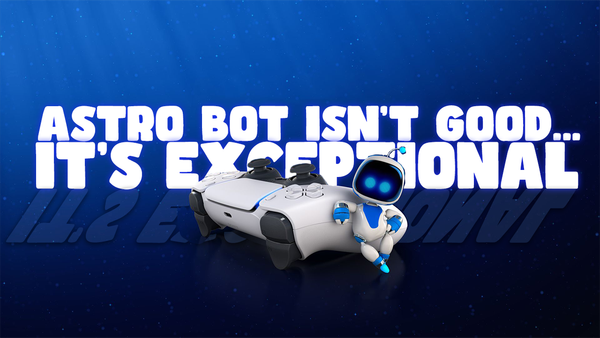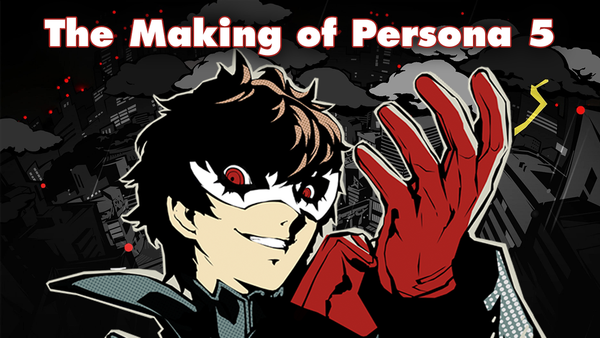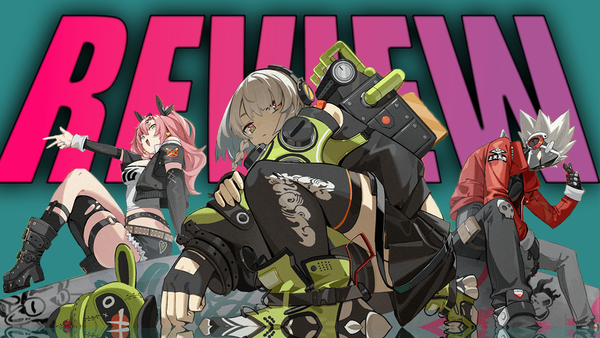Doom: The Dark Ages is Satisfying and Solid (Review)

Overview
Doom: The Dark Ages is undeniably the boldest entry in the modern Doom series—swinging for the fences with a prequel story, a slower pace, and a heavy focus on melee combat. It deviates significantly from the established formula of Doom 2016 and Eternal, and as a result, it’s no surprise that this installment is shaping up to be the most divisive of the trilogy.
This is a game that takes big swings, and in many ways, it lands them. The combat loop is satisfying and brutal, offering a powerful toolkit that rivals Eternal, but at a more grounded, methodical pace. When it’s firing on all cylinders—when you’re in full control of your tools and unleashing pure chaos—it delivers a berserker power fantasy that’s unmatched. The Doom Slayer here feels less like fighter jet marine of Eternal and more like Guts from Berserk—wielding a massive flail instead of a greatsword, tearing through demons with unstoppable fury.
But for all its ambition, The Dark Ages also fumbles in key areas. The pacing is uneven, some segments feel bloated or repetitive, and the shift in gameplay rhythm won’t click for everyone. It’s a game with high highs, but also stretches that drag—where its bold ideas don’t always come together cleanly.
Overall, I did enjoy my time with The Dark Ages, but unlike Doom Eternal or 2016, I’m not sure I’m eager to revisit it anytime soon. There’s a lingering sense that something’s missing—an intangible piece that keeps it from reaching the same heights as its predecessors.
So with that in mind, let’s dive into my review of Doom: The Dark Ages, and unpack what works, what doesn’t, and where this ambitious prequel lands in the modern Doom legacy.
Story
One of the key elements that holds Doom: The Dark Ages back, in my view, is its story—or more specifically, the way it’s delivered.
Narratively, Doom has always been at its strongest when it embraces minimalism. Doom 2016 is the perfect example of this—letting the world-building shine through level design, environmental storytelling, and brief, punchy lore entries. It trusted the player to piece together the context while keeping the spotlight on action. In contrast, The Dark Ages takes the opposite route. It leans heavily into cutscenes, dialogue, and cinematic sequences—a trend that started in Eternal’s expansions and is fully embraced here.
Unfortunately, this shift feels like a misstep. The game bombards you with narrative beats that rarely land. The central villain feels like a generic plot device rather than a meaningful antagonist, and most side characters are forgettable, lacking any real arcs or standout moments. I understand that Doom has never been about deep character development—but that’s exactly the point. Trying to inject traditional storytelling into a series built around relentless momentum can feel jarring and misplaced.
Set as a prequel to Doom 2016 and Eternal, The Dark Ages focuses on the Doom Slayer’s origins and the war between the Sentinels and the demonic forces. On paper, this could be a compelling expansion of the universe. But in practice, the story feels hollow and one-note. While there’s a certain charm to its over-the-top, action-flick absurdity, the sheer volume of cutscenes and exposition ends up bogging down the experience. Rather than enhancing the game, the story often distracts from its core strengths—the combat, the momentum, the adrenaline.
There’s a sense that the narrative is padding the runtime rather than enriching it. For a game built on ripping and tearing, stopping to watch extended lore dumps breaks the rhythm. It’s not just that the story doesn’t work—it’s that it gets in the way.
I liken it to the Mad Max trilogy. The first two films are lean, focused, and iconic—just like Doom 2016. Then comes Beyond Thunderdome, which tries to deepen the lore and expand the world, but ends up diluting what made the series special. Doom: The Dark Ages falls into the same trap—trying to say more, but ultimately saying less.
By pulling back the curtain on the Slayer’s past and mythos, the game robs the character of the mystique that made him compelling in the first place. He was never meant to be understood—he was meant to be feared. A walking embodiment of rage and vengeance. The more we know, the less he resonates.
Gameplay
Combat
The combat in Doom: The Dark Ages won’t be for everyone—but it absolutely worked for me. While it dials back the breakneck speed of Doom Eternal, the slower pace feels deliberate, built around what id Software describes as a “stand and fight” philosophy. Rather than constantly zipping around arenas, you're encouraged to hold your ground, control the space, and dominate through sheer force.
At its best, The Dark Ages makes you feel like a berserker unleashed. You’re slamming enemies with your flail, shield-bashing, ground-pounding, and charging headfirst into chaos with a brutality that’s both cathartic and empowering. The Slayer in this game feels like the known force of nature, depicted differently, more like a war god in motion. If Doom Eternal was about precision and momentum, The Dark Ages is about weight and impact. In many ways, it delivers the strongest power fantasy in the reboot trilogy.
Core to this experience are two new weapons: the Chainsaw Shield and the Flail. These tools form a push-and-pull dynamic between offense and defense—one lets you parry and reflect projectiles, while the other turns you into a wrecking ball in close quarters. The emphasis on melee changes the rhythm of combat significantly, shifting the focus toward parrying, aggression, and timing, rather than Eternal’s focus on movement and resource juggling.
That said, it takes time for the combat to "click." Initially, it may feel like a step back for fans of Eternal’s speed and intensity. But once the flow settles in, it becomes immensely satisfying. In many ways, it strikes a middle ground between Doom 2016 and Eternal—less overwhelming, more readable, but still layered with tactical depth. The pacing is more methodical, with telegraphed enemy patterns and deliberate decision-making, making it more accessible without dumbing anything down.
When everything comes together—the weapons, the enemy designs, the arena flow—it just feels right. You feel equipped with an arsenal that’s unapologetically metal and true to Doom’s core mantra: Rip and Tear until it is done.
However, not everything works. One mechanic that didn’t sit well with me was the Leader enemies, mini-bosses that require you to break their morale before you can damage them—usually by clearing out nearby enemies. Rather than adding a compelling challenge, these moments disrupt the combat flow, turning encounters into busywork. You end up fixating on a morale bar instead of staying immersed in the visceral, moment-to-moment action. It’s a mechanic that feels more obstructive than engaging.
In the end, Doom: The Dark Ages delivers a bold reimagining of the series' combat. It may alienate some fans of the prior two entries, but for those open to a new rhythm and philosophy, it offers a deeply satisfying, grounded, and gloriously brutal take on Doom’s signature carnage.
Level Variety and Design
The level variety in Doom: The Dark Ages is something of a mixed experience. On one hand, I really enjoyed the traditional Doom Slayer levels—these felt the most refined, offering a solid mix of exploration, platforming, and fast-paced combat. The early game, in particular, shines with open-ended Slayer missions that encourage players to make use of their full toolkit, and these stages felt like a natural evolution of what made Doom Eternal so satisfying.
However, by the end of the campaign, fatigue began to set in—not necessarily because of the game’s length, but due to how its 22 levels are divided across three main mission types, each with varying degrees of success.
1. Doom Slayer Missions
These are the core of the experience and the strongest overall. Some are linear in design, while others take a more open-world approach, featuring optional objectives and hidden paths. These levels best capture the flow and energy expected from modern Doom, and for the most part, they’re a joy to play.
2. Cyber-Dragon Levels
Conceptually, these are exciting—you’re flying a cybernetic dragon across large-scale environments, docking at outposts, and engaging in aerial combat. In practice, though, they feel undercooked. While I personally didn’t find the dragon controls as clunky as some reviewers suggested, the gameplay itself becomes one-dimensional. After the first mission, the novelty wears off, and the encounters lack meaningful variety. It’s a great idea that never fully capitalizes on its potential.
3. Titan Mech Levels
Here, you pilot a massive mech to brawl with kaiju-sized demons—initially an awesome spectacle. But similar to the dragon sections, these levels suffer from shallow mechanics. You’re mostly walking through linear corridors, punching the same enemy types, and repeating a limited set of actions like charge attacks and dodges. Once the visual wow-factor fades, these sequences begin to feel like a chore.
Ultimately, Doom: The Dark Ages feels like a double album—ambitious in scope, but uneven in execution. With 22 levels, only about 8 or 9 truly land with consistent quality. The rest, while often bold in concept, lack the mechanical depth or variation to match the franchise’s high bar, resulting in a campaign that’s occasionally thrilling, but also intermittently bloated and disrupted in its pacing.
Progression
Doom The Dark Ages see's the return of different forms of progression which come in the form of skill trees, which are provided to each weapon, your shield and your different forms of melee. They do feel like they significantly improve the player expression in combat, and there are even runes that you unlock for your shield later in the game, that further expand your capabilities. The weapon variety is fantastic and id Soft has done a fantastic job here providing you an excellent variety of unique and interesting weapons to play with. There are different types of rewards that will tie to the various upgrades of these weapons. Many through gold that you find, but also through different gems and crystals that provide a significant upgrade and are scattered across different levels. These are also incentives and rewards for the more optional tasks in the open-levels.
Visuals and Sound
Visuals
Let’s start with visuals, sound, and performance in Doom: The Dark Ages. Visually, the game is stunning. Powered by the idTech 8 engine, it delivers breathtaking environments, set-pieces, and expansive vistas that rival—and in some cases surpass—its predecessors. Towering titans clash in the distance, creating truly jaw-dropping moments, and the level variety, especially in the latter half of the game (which I won’t spoil), is outstanding. There are moments when I would just sit back and take in the different environments and architectures in this setting, because it's absolutely awesome and it is absolute wizardry how good this looks. In terms of visual fidelity and design, The Dark Ages absolutely delivers.
Sound
One of the more disappointing aspects of Doom: The Dark Ages is its soundtrack—the first in the reboot series not composed by Mick Gordon. As much as I hoped the new team would rise to the occasion, Gordon’s absence is deeply felt. In Doom 2016 and Eternal, the music was as integral to the identity of the series as the Slayer himself, driving the energy and flow of combat. While the soundtrack in The Dark Ages isn’t bad, it lacks the same impact and presence, and that diminished intensity subtly affects the overall feel of the combat. It’s a tough act to follow, and unfortunately, it doesn’t quite measure up.
Performance
Performance-wise, Doom: The Dark Ages is rock-solid, consistently holding 60fps or higher at high resolutions and graphical settings. Running it on a 4080, I was able to achieve excellent visual fidelity without sacrificing performance. It’s also worth noting that the game includes a highly customizable difficulty system, allowing players to tailor the experience to their preferences. I personally dove straight into Nightmare mode, but for those seeking a different level of challenge—or requiring more accessible options—these settings make the game far more approachable.
Conclusion
In conclusion, despite many critiques and what must seem like a harsh takeaway, I do feel like Doom The Dark Ages is still a very entertaining and satisfying experience when it clicks. It has an interesting blend of melee action to accompany the shooting, and enemies that work with bullet hell styled abilities that you need to work against. Whilst I do feel like this departure may render it the black sheep of this trilogy, I can't undermine or deny the fact that is does stand out as a unique experience, and it really does just showcase how much id Soft loves to experiment and change up the Doom formula. Doom The Dark Ages overall is a good game, and one you should absolutely play at some point. It delivers a satisfying combat loop and when it is firing off on all cylinders it is Doom at its absolute best. Despite not particularly loving the story, the dragon-riding and the absence of a Mick Gordon soundtrack, Doom The Dark Ages does serve as a good title, in the vain of a spin-off and when you're having to follow up a game like Doom Eternal and a soundtrack that that of Mick Gordon's the odds are stacked against you. Doom The Dark Ages may be the weakest in this trilogy, but what that means is that it is a good game that is weighed against two genre-defining powerhouses, and when you look at it like that, The Dark Ages, still comes out looking like a pretty good game, and overall a shooter worth experiencing.




